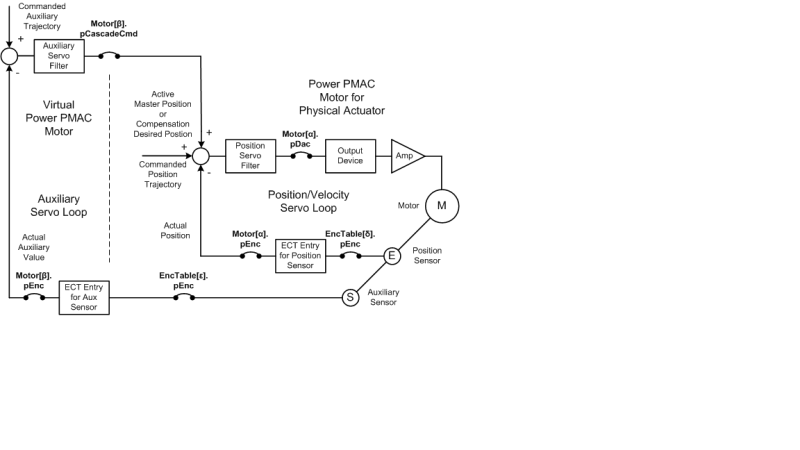If the reference tracking setpoint is directly coupled to the plant's state, is the system always nonlinear?
What is such a coupled system called?
1) Say you have a fast dynamic system, and the actuator's reference tracking target is given by its position. This is directly coupled.
Eg at 0 units of actuator extension, the target setpoint would be 0. But if even slightly perturbed, the setpoint changes from 0.
Eg at 1 unit of actuator extension, the setpoint would be -0.5.
At -1 unit of actuator extension, the setpoint would be 0.5.
How is analysis conducted to check stability? In the latter example, the SP mapped opposite the plant state.
2) Clearly at some point (1:-1 mapping), if the mapping is large enough, the system is unstable: say at 1 unit actuator extension, the SP is -10 (and at -10, the SP is +100), which would lead to unbounded oscillations.
Can such a situation be stabilized in any way? Short of significant enough SP filtering that the new coupled SP is inside a 1:-1 mapping?
3) It seems that if the setpoint is moving in the same direction as the plant, and the mapping is >=1:1 then the system is inherently unstable since it's always chasing the reference. Is this correct as a rule, or are there other scenarios?
But this following scenario is stable, right?
at 0 unit of actuator extension, the setpoint is 0. Then the system is perturbed, and the actuator moves to 1 units.
at 1 unit of actuator extension, the new coupled setpoint is 0.5.
Then moving to 0.5 units of actuator extension, the new coupled setpoint is 0.25. This seems to converge back to 0.
Basically I'm looking for resources to analyze controllability and stability of such coupled systems.
What is such a coupled system called?
1) Say you have a fast dynamic system, and the actuator's reference tracking target is given by its position. This is directly coupled.
Eg at 0 units of actuator extension, the target setpoint would be 0. But if even slightly perturbed, the setpoint changes from 0.
Eg at 1 unit of actuator extension, the setpoint would be -0.5.
At -1 unit of actuator extension, the setpoint would be 0.5.
How is analysis conducted to check stability? In the latter example, the SP mapped opposite the plant state.
2) Clearly at some point (1:-1 mapping), if the mapping is large enough, the system is unstable: say at 1 unit actuator extension, the SP is -10 (and at -10, the SP is +100), which would lead to unbounded oscillations.
Can such a situation be stabilized in any way? Short of significant enough SP filtering that the new coupled SP is inside a 1:-1 mapping?
3) It seems that if the setpoint is moving in the same direction as the plant, and the mapping is >=1:1 then the system is inherently unstable since it's always chasing the reference. Is this correct as a rule, or are there other scenarios?
But this following scenario is stable, right?
at 0 unit of actuator extension, the setpoint is 0. Then the system is perturbed, and the actuator moves to 1 units.
at 1 unit of actuator extension, the new coupled setpoint is 0.5.
Then moving to 0.5 units of actuator extension, the new coupled setpoint is 0.25. This seems to converge back to 0.
Basically I'm looking for resources to analyze controllability and stability of such coupled systems.

